We spent most of our third visit to Japan as apprentices at Mitosaya Botanical Distillery in Otaki, with occasional trips to Tokyo, and a couple of days traveling by train in Hokkaido. It is the northernmost, most isolated prefecture, the one that we liked the least during our trips- in the meantime, it warmed up to me and I got to appreciate our time spent there.
We decided to visit Hokkaido last minute, while we were already in Japan, choosing between spending the last couple of days on Kyushu (the southernmost of the main islands) or Hokkaido. I felt that we needed more time (and a car) for Kyushu, and I was curious about Hokkaido after having watched “Joanna Lumley’s Japan” and the videos made by “Internationally ME” Angela An who explores the lesser-known regions of Japan (always putting an emphasis on the people and local communities), enjoys the food and every detail of Japanese life with an enthusiasm that is contagious. I knew Hokkaido was known for its nature, with 6 national parks, 5 quasi-national parks, and 5 active volcanos, and I learned from Angela that it’s also known for the freshest seafood (isn’t all of Japan?), Sapporo beer, and dairy products (which meant a lot of cheesecake and ice cream for us!). From Joanna, I learned about the native Ainu people, whose descendants still live in the north of Hokkaido, and felt the wilderness and the isolation of its remote regions.
We didn’t fall in love with Hokkaido at first sight, as we did with the rest of Japan. It is the most isolated one of the main Japanese islands, has the weakest traffic connections, isn’t as organized and efficient as the rest of Japan, its trends in tourism are old-fashioned, simply- everything isn’t as you would expect from Japan.
By the most isolated one, I don’t only mean geographically- serious settlement of the Japanese on Hokkaido began only at the end of the 19th century. The native Ainu people were assimilated during the 20th century, their culture and language repressed until the eighties when efforts were made to preserve their language and their culture. Still, Hokkaido is different, even today, and you can feel it as soon as you cross the Tsugaru Strait that separates the main island Honshu from Hokkaido.
Our first stop on Hokkaido was Hakodate, at the same time the last stop of the Shinkansen bullet train on the road to the north. Hakodate seemed so dull that day, that we decided to spend the next morning in Onuma Quasi-National park, half an hour train drive away, and the next afternoon in the Aomori Museum of Art, back on Honshu. On our first day in Hakodate, I wrote in my diary: “Hakodate is a ghost town. Except for the seaside, which reminded us of Pula, and the smell of the sea that reminded us of Istria, the city is bleak, the only people on the streets are large tourist groups touring the island by bus, and the (already weak) tourism is oriented in that direction.” In the end, of course, Hakodate wasn’t at all that bad, we just needed to accept its calm, almost melancholy, after the abundance of Tokyo.
That afternoon, we walked down the seaside with the view of the shipyard, and stopped at the old brick warehouses that turned into a sort of a shopping center- we hoped for a collection of nice stationery stores, galleries, cafes, and bakeries, but got a handful of kitsch that we couldn’t associate with Japan instead. Still, in one of the halls, a big Japanese producer of washi tape, MT, had a pop-up store with hundreds of colorful rolls of tape exhibited- it was fun, and proof that everywhere in Japan there are small discoveries awaiting! As a souvenir from Hakodate, we bought a couple of rolls of washi tape.
We walked to the Motomachi district, former residence of consulates and foreign traders, where you can still see an Orthodox church, a Buddhist temple, and a British consulate, all within a couple of minute’s walk. It is considered a “Western” part of Hakodate, and it did look sort of American to us, melancholic (with wooden villas that looked abandoned), romantic (with flower beds filled with flowers that no-one except us looked at), as if it fell asleep a hundred of years ago, and haven’t woke up since. We encountered no one on those streets.
We had dinner in one of the tiny eateries in Daimonyokocho (in Japan, yokocho is an alleyway filled with small eateries, with good food and loyal customers)- the eaterie was typically Japanese, with counter seating and the owners preparing the food behind the counter. We came to Hokkaido for seafood, so we ordered grilled squid, cooked crab, eggs with vegetables, edamame (lightly sated cooked soybean pods, that we order on every occasion in Japan), rice. Cold Asahi beer, and a chat with the neighbors at the counter. I presume not so many tourists set foot into such eateries, as they wanted to talk about everything Croatian that was big in Japan: Dubrovnik, Plitvice, Mirko CroCop Filipović, a former K1 fighter that had celebrity status in Japan in his days.
The next morning we took the train to Onuma Quasi-National Park, a lake landscape dotted with islets, at the foot of the Komagatake volcano. A setting for a fairy tale, with islets so little and so flat that they seemed to be floating, and indeed hidden in a grove was a tiny lake with real floating islets, or rather bushes of tall grass carrying young trees, that were moved to the left and the right by the wind, and that reminded us of some magical landscape from Hayao Miyazaki’s imagination.
Bigger islands were connected by bridges, and we went as far as we could walk. There were boats taking the tourist groups for a ride around the lake and the isles, but we weren’t interested in any type of organized field trip, so after the walk, we went to taste the ice cream Hokkaido is known for.
More than 50% of the annual Japanese milk production comes from Hokkaido- colder climate and vast green spaces enable perfect conditions for dairy farming. Each Japanese region takes pride in its regional products, and Hokkaido definitely prides itself on delicious ice cream and cheesecakes that could be found at every corner. We ate fluffy cheesecakes for breakfast, dinner, as a snack at any part of the day- they became an integral part of our memories of Hokkaido. On the outskirts of Onuma Park, I had my first ice cream on Hokkaido: half milk, half musk melon. It was perfectly shaped, creamy and light, and tasted like real milk.
We came back to Hakodate around lunchtime, and as we had already decided the day before that we’ve seen enough of the city, we took the train to visit the Aomori Museum of Art back on Honshu. Our Shinkansen tickets were still valid, and there was nothing to lose, except time (and at the end a visit to the museum turned out wonderful). The Shinkansen rides are such a beautiful experience, that even if we only went up and down with the train, it would have been enough.
In the evening, we decided to take advice from our host Daisuke (which seemed too touristy the day before), and have burgers at the legendary Lucky Pierrot joint and later cheesecake at equally legendary Snaffle’s. Japanese pubs and eateries like to highlight their most popular dish on the menu, and since in Lucky Pierrot it was the Chinese Chicken Burger, we ordered two, along with French fries and beer. It must have been the best burger we ever tried: soft bun with lots of sesame, beautifully spicy fried chicken, simple lettuce, and mayonnaise. The joint itself was old-fashioned, worn-out, walls filled with posters (Tamara de Lempicka’s, among others, which I did not expect in such a place in the north of Japan), and all of the workers were elderly ladies, which gave an air of authenticity to the place as if they worked there their whole lives. I read later that Lucky Pierrot is a very well-known chain in all of Japan, but they only open new joints in Hakodate- to taste their burgers, you have to come to Hakodate, this is a company’s policy.
In Snaffle’s, we ordered a cheesecake and a very delicate Mille Crepe Strawberry cake- and took them to our room. They were, of course, wonderful, light, and fluffy, which proved that in Japan even if a restaurant (or a bar, or a cake shop) seems like something meant for tourists, it is most likely to be fantastic.
We grew fond of Hakodate in the end- of its peace and calm, modesty, melancholy, the smell of the sea, burgers and cheesecakes, and mild, translucent light.
The next day, on our way to the capital of Hokkaido- Sapporo, we decided to make a stop at Noboribetsu Onsen. Onsens are thermal springs, that are, given the intense volcanic activity of the land, numerous in Japan. The term onsen can also denominate a place built around thermal springs, the thermal baths, the hotels with private baths, and when I looked for those on the internet, they mostly looked very charming: the place would be surrounded by the woods, there would be a river running through its center, the hotels would be traditional, wooden establishments, some of them would even serve food cooked on the thermal heat. We could have known what to expect of Noboribetsu, as soon as we got off the train and took the bus packed with tourists that was to take us to the thermal springs. We were greeted by megalomanic, sad, concrete hotel blocks and giant parking areas for the tour busses- it repelled me, this antidote to the refined Japanese aesthetics and respect to nature.
We headed straight for the walking path that took us through the woods, by the river, and then through a thermally active valley, that released clouds of vapor in the air. On the Oyunuma river path- plastic pipes springing from the ground, leftover plastic nets, bags, wires, an upside-down version of a natural footbath that was presented online, with the photos of people soaking their feet in the river. I couldn’t imagine soaking anything in that water, so we proceeded to the Jigokudani, or “Hell’s Valley”. The valley was beautiful, with the vapor rising up from the lakes and the fumaroles with a strong sulfur smell, but spoiled by the mass tourism, traffic roads crossing the valley, giant parking spots, and a mass of people overflowing the footpaths.
After the walk, we missed a bus, there was no schedule at the bus station, and we had to take a taxi, which, with a suffocating smell of the air freshener took us to the train station. We couldn’t wait to get to Sapporo.
Sapporo is the biggest Japanese city north of Tokyo, and with almost 2 million inhabitants a metropolis, obviously, but not in a way of Tokyo or Osaka. I found both of them more layered which doesn’t surprise me given the fact that Tokyo and Osaka were developed cities already in the 18th century, and the development of Sapporo started in the second half of the 19th century. What I missed in Sapporo was the diversity of Tokyo, its modern architecture on a large scale on one hand, and the peaceful residential neighborhoods on the other, the little discoveries you meet in the unexpected places: a peculiar bar, a street, a restaurant, a shop, house, temple, museum.
We were, as always, mostly interested in food, and as soon as we arrived at the main train station we got in line for Nemuro Hanamaru, the famous conveyor belt sushi Angela An proposed in her video. You can often find very good restaurants at the Japanese train stations, and we ate great sushi, udon, okonomiyaki, cakes, more than once during our trips to Japan.
Conveyor belt sushi is quite popular in Japan, a place where you can affordably eat sushi prepared right in front of you. There are other delicious things except for sushi on the conveyor belt, tempting you as they pass by, and there, except tons of fresh sushi, we couldn’t resist udon soup and tempura (crispy fried vegetables). The color of the plate designates its price, and once you’re done with your meal, the waiters scan the pile of dishes you collected (each of them has a built-in die) to calculate your bill. For dessert, following another of Angela’s recommendations, we went to Kinotoya bake on the same station to try the little cheese pies that were, again fantastic: crispy pastry on the outside and golden baked cream cheese on the inside- Hokkaido’s cheese desserts are something else!
The next day, we went to explore the city by walking- it always leads to sorts of discoveries, and in Sapporo, they were: Tanukikoji shopping arcade, typical of Japanese towns (and in bigger towns, you can find them in different neighborhoods), with slightly old-fashioned tech stores, stores selling knives or kitchen utensils, souvenir shops, and restaurants. Then, Nijo market with loads of fresh fish, crab, clams, tiny shops selling bags of dried fish as a snack, and dried mussels wrapped like candies; with eateries that offer donburi- bowls of rice topped with raw salmon roe, sea urchins, and fish (often as a breakfast for the locals, but for us, it was too early in the morning for raw fish). The entertainment district of Susukino, with bars, night clubs, restaurants, karaoke bars, pachinko parlors, red-light establishments, and big neon signs that reminded me of Tokyo. We visited the neighborhood during the day and thus missed that “Lost in Translation” atmosphere. The only thing that “revealed” the shadiness of the place was a dark curry restaurant we ate at, with equally moody waiters (but the curry was, unsurprisingly, good).
We went into Sapporo Factory, a giant shopping mall in the center, just to marvel at the large glass dome covering the inner atrium from above- an impressive complex built on the former premises of the first Japanese beer factory (and you can also visit a small, still functional brewery). Just across the street, we found a cool little shop and bar that served cloud-shaped milk ice cream, even more perfect than the one we had at Onuma Park. This is a kind of discovery I talked about earlier when comparing Sapporo to Tokyo, I wished for more of them.
Later in the afternoon, we went far out of the city center to visit the Yurihagara flower park, that Luka found among the landmarks. The park wasn’t spectacular, nor was it a Japanese type of a park, such as the ones we visited in Kanazawa or Okayama, but it had blooming flowerbeds, was busy with the cute little dogs in their walk, and everything was bathed in the mild, golden afternoon sunlight. We passed through the sleepy residential neighborhoods on our way to the station and waited for the train by ourselves, the platform empty, which all contributed to us feeling really far away.
In the evening, we went to Sapporo Beer Museum (a very popular beer label in all of Japan), to try the “Jingisukan” (the “Genghis Khan”), a dish Sapporo is known for. Thinly sliced mutton arrives raw on a plate, along with some raw vegetables, and a couple of sauces. The waiter turns on the grill at the middle of the table and this is where the guests prepare their own meal- the sizzling grilled meat and vegetables, right in front of you. The meal was simple in flavors, but interactive and fun, along with two glasses of beer, we enjoyed chatting about our trip that was coming to an end, all that while grilling our own dinner. A former sugar factory, the brick building of the museum and the pub, built in the second half of the 19th century is a nicely preserved example of industrial architecture. The facade covered in ivy made my mind wander into one of Miyazaki’s movies again, and the calm of the entire complex on a midweek evening contributed to the atmosphere.
On our last day in Sapporo, we took the train to Otaru, a small town on the coast, known for its canal, and the former herring warehouses that now function as souvenir shops selling glass brick a brack (Otaru is, so it seems, known for glass production as well). We were impressed neither by the canal nor by the rest of the town: same as Hakodate and Noboribetsu Onsen, it was built around tourism we weren’t used to in Japan. Kitchy souvenir shops lining the main streets on one hand, and a sort of dusty disrepair as soon as you move away from the main street. We sat for a cheesecake at Le Tao, a famous cake shop, which had an air of a forgotten eighties establishment: with outdated, empty dining room and waitresses dressed in old-fashioned uniforms, I felt as if we traveled back in time.
On the train ride back to Sapporo, I observed that the landscape was dotted with blue details, a sort of Smurfs blue: roofs of the houses, awnings, plastic barrels, fences were all painted in that same shade, and I could imagine someone skilled in painting being inspired by that landscape. A part of the rails runs directly by the sea, and from the moving train, we saw dolphins swimming relatively close to the shore. It was one of those unexpected Japanese discoveries.
We missed having a car on Hokkaido because the wild nature this island is known for, was only reachable to us in traces. It was practically impossible to get to some of the National Parks in the north without a car, especially out of the summer season. If we go back to Hokkaido, it will be by car, for how else could I see marimo, the cute algae of Lake Akan?
In the end, an hommage to the Hokkaido cheesecake!
If you would like to support this blog and encourage me to write more often, treating me to a coffee on the Ko-fi platform would be a nice way to do so. Thank you!
Pin this article for later!




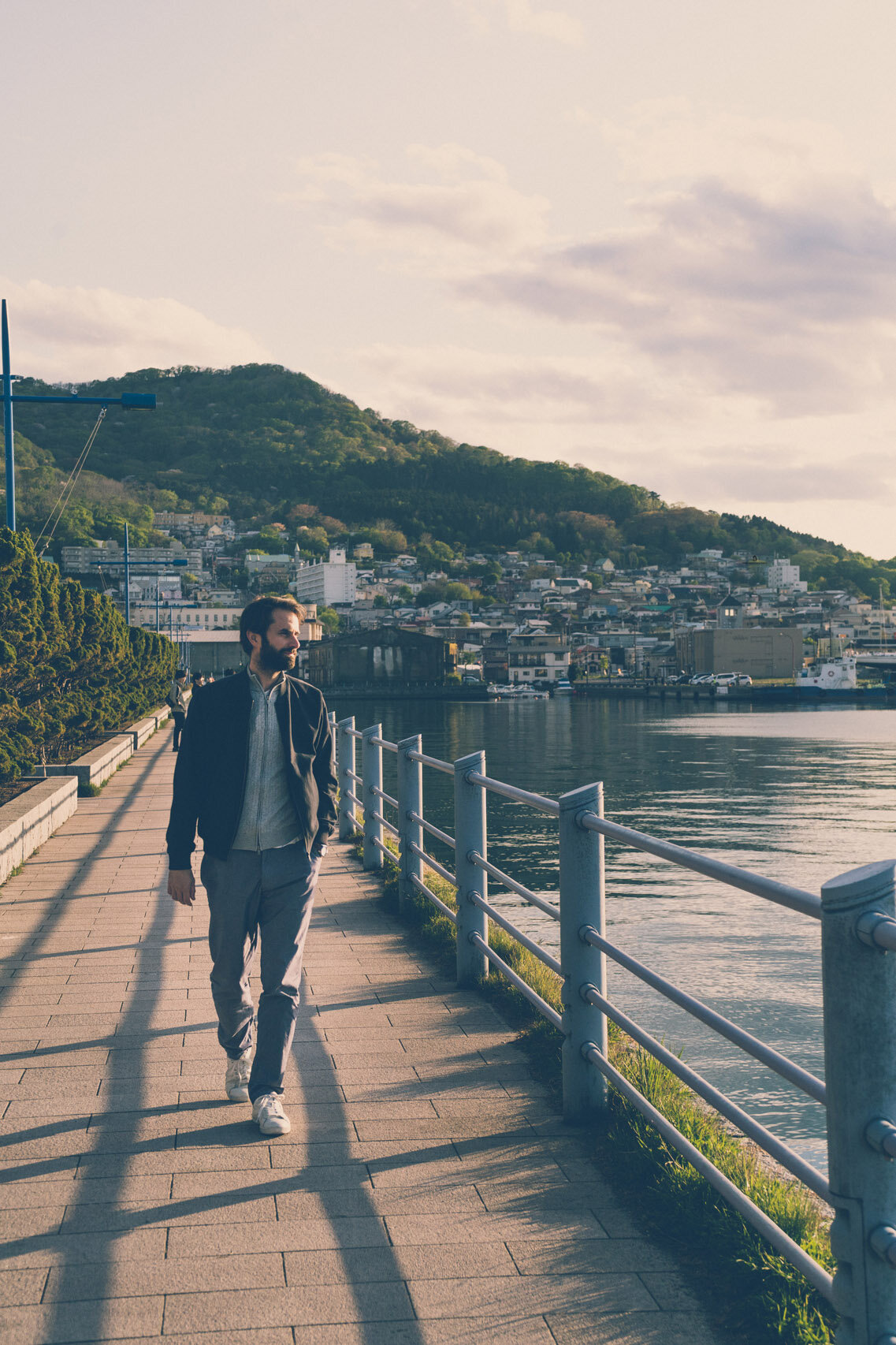

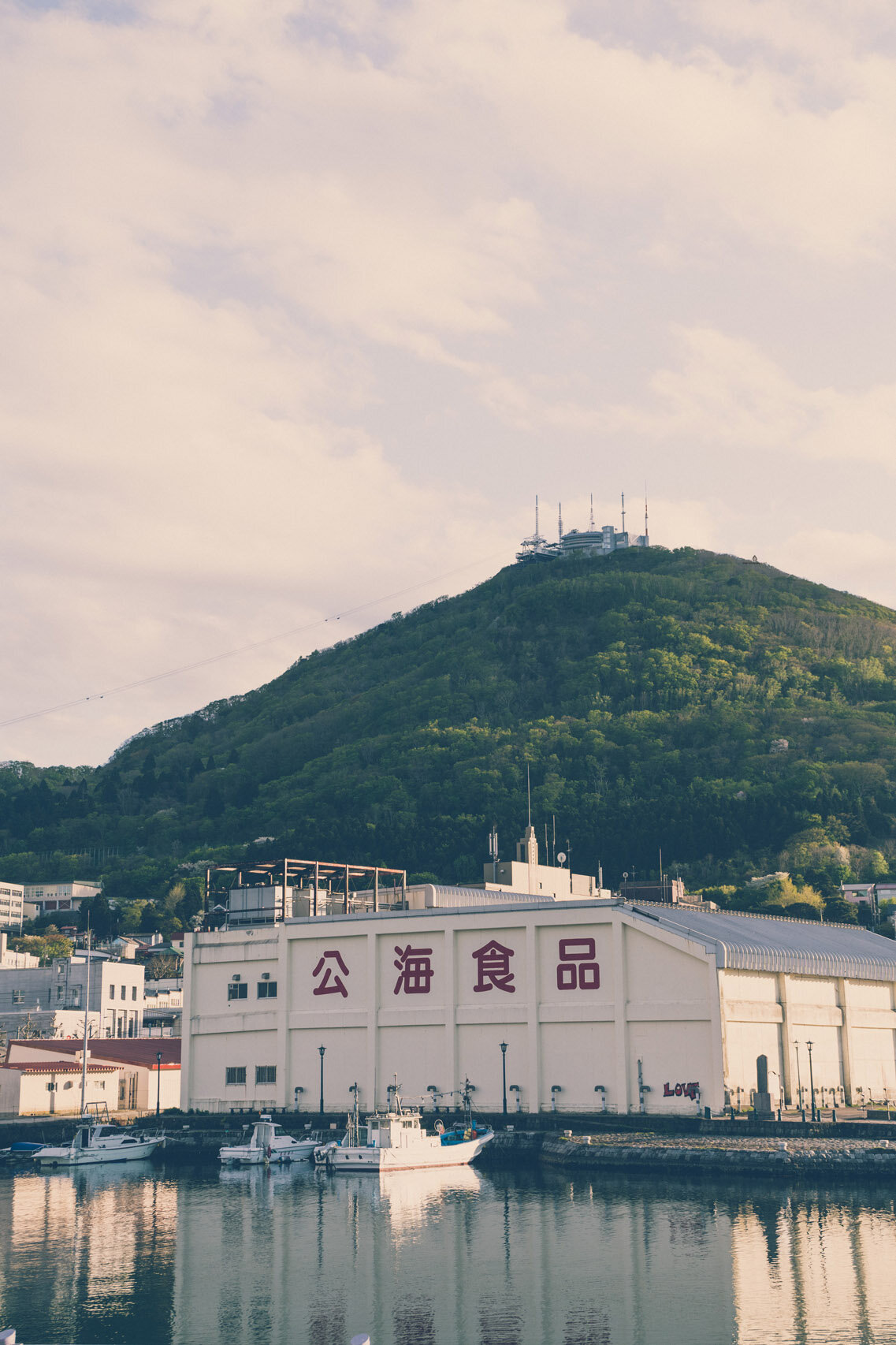




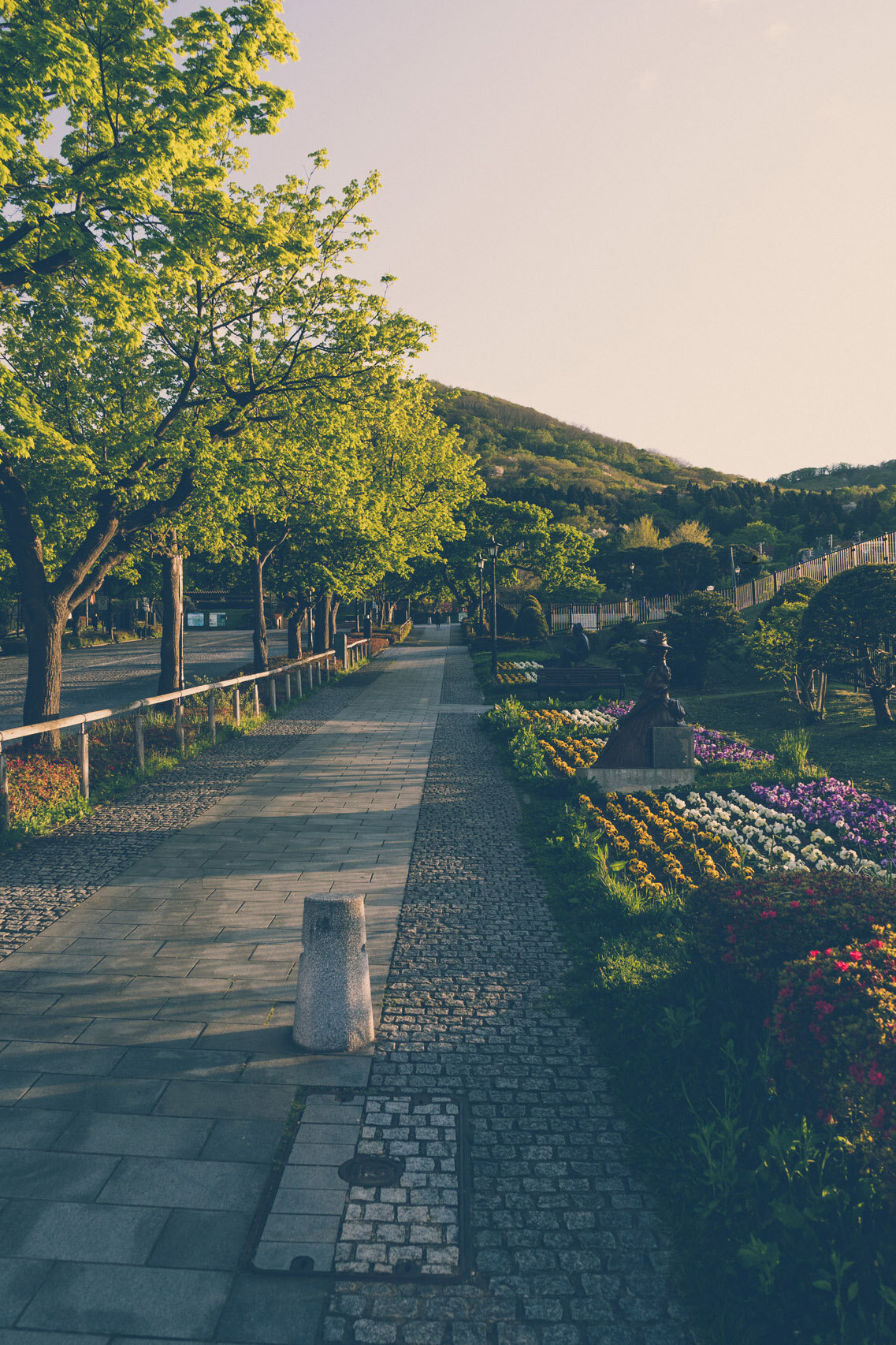
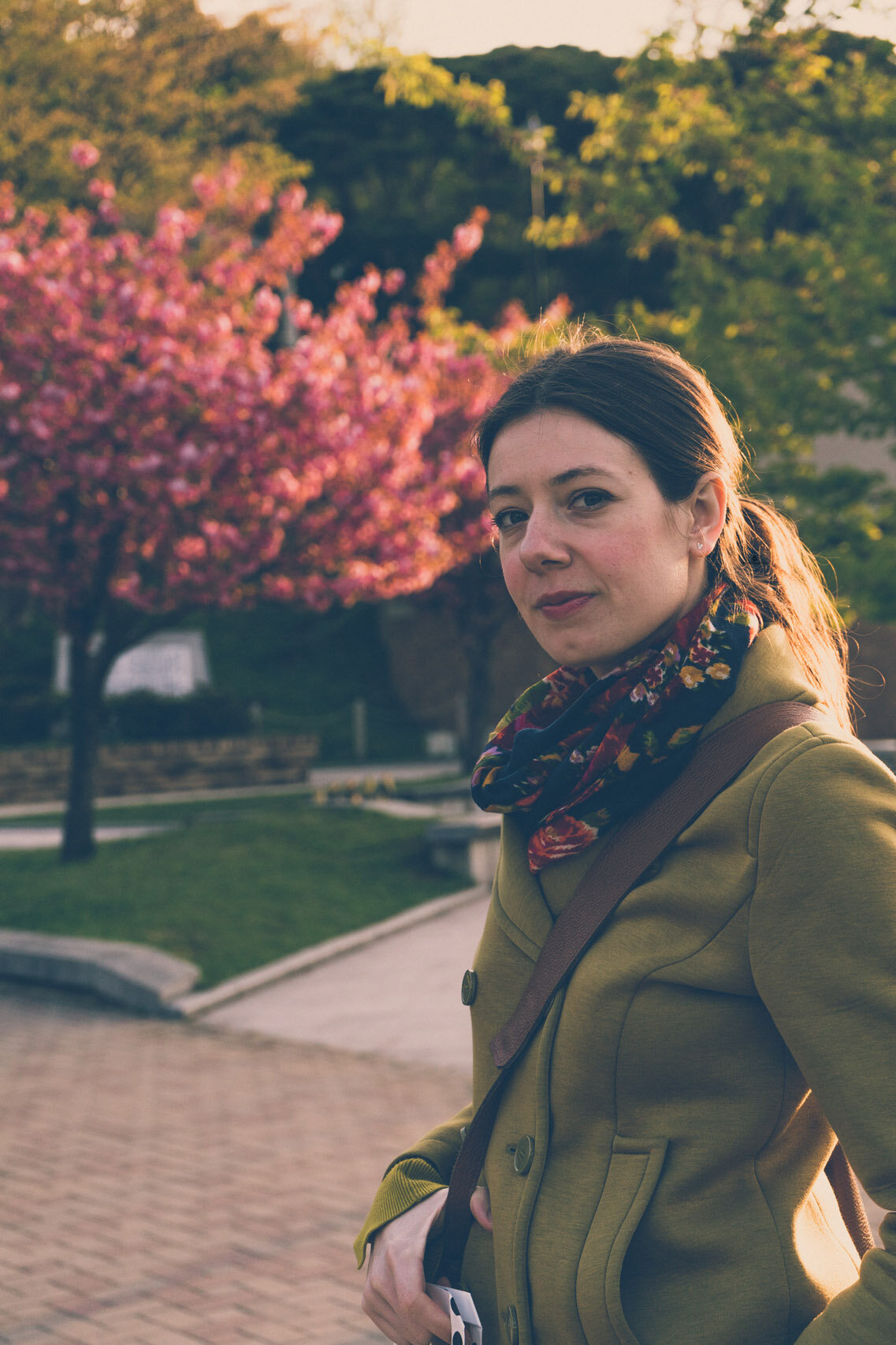

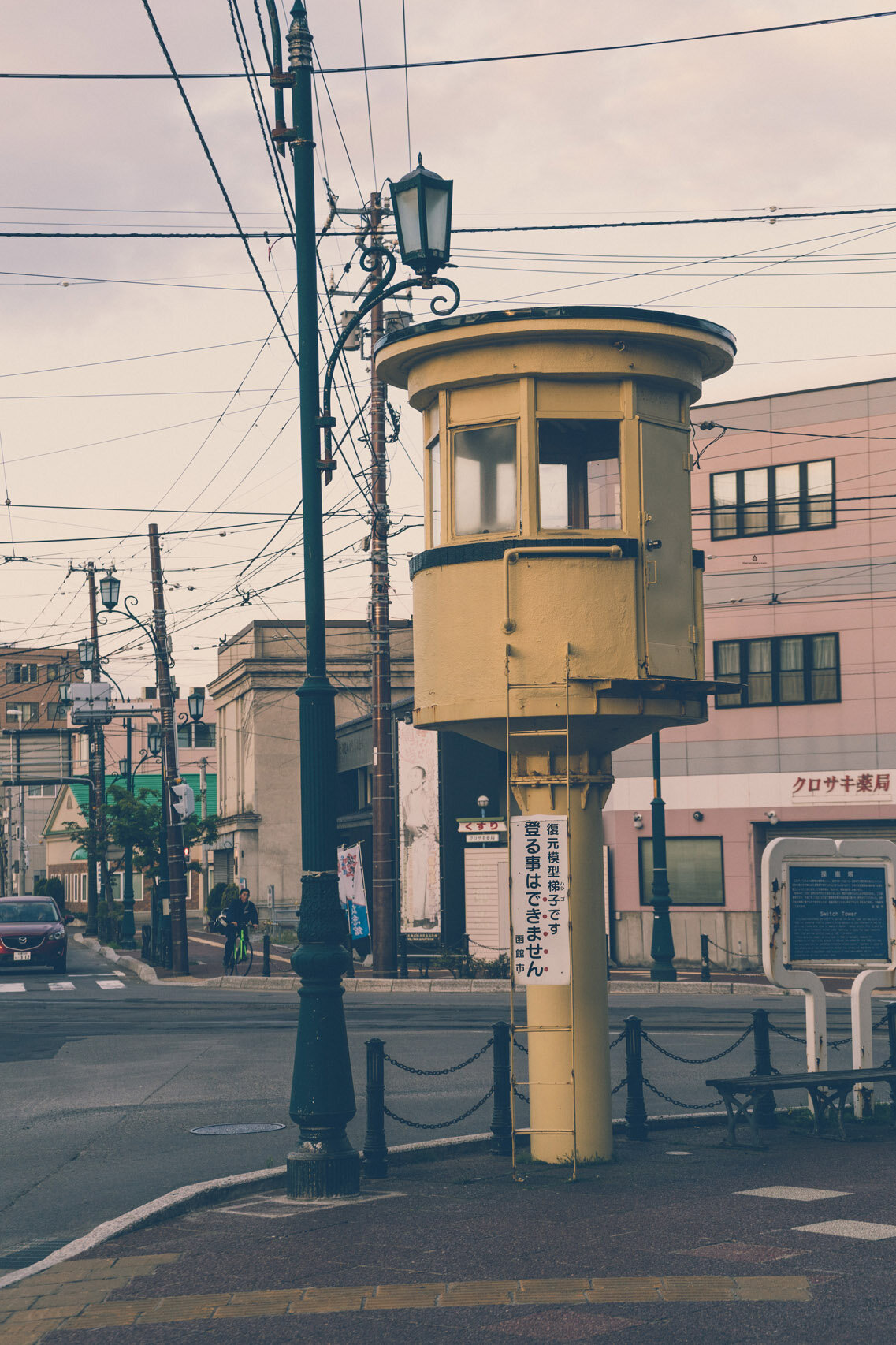
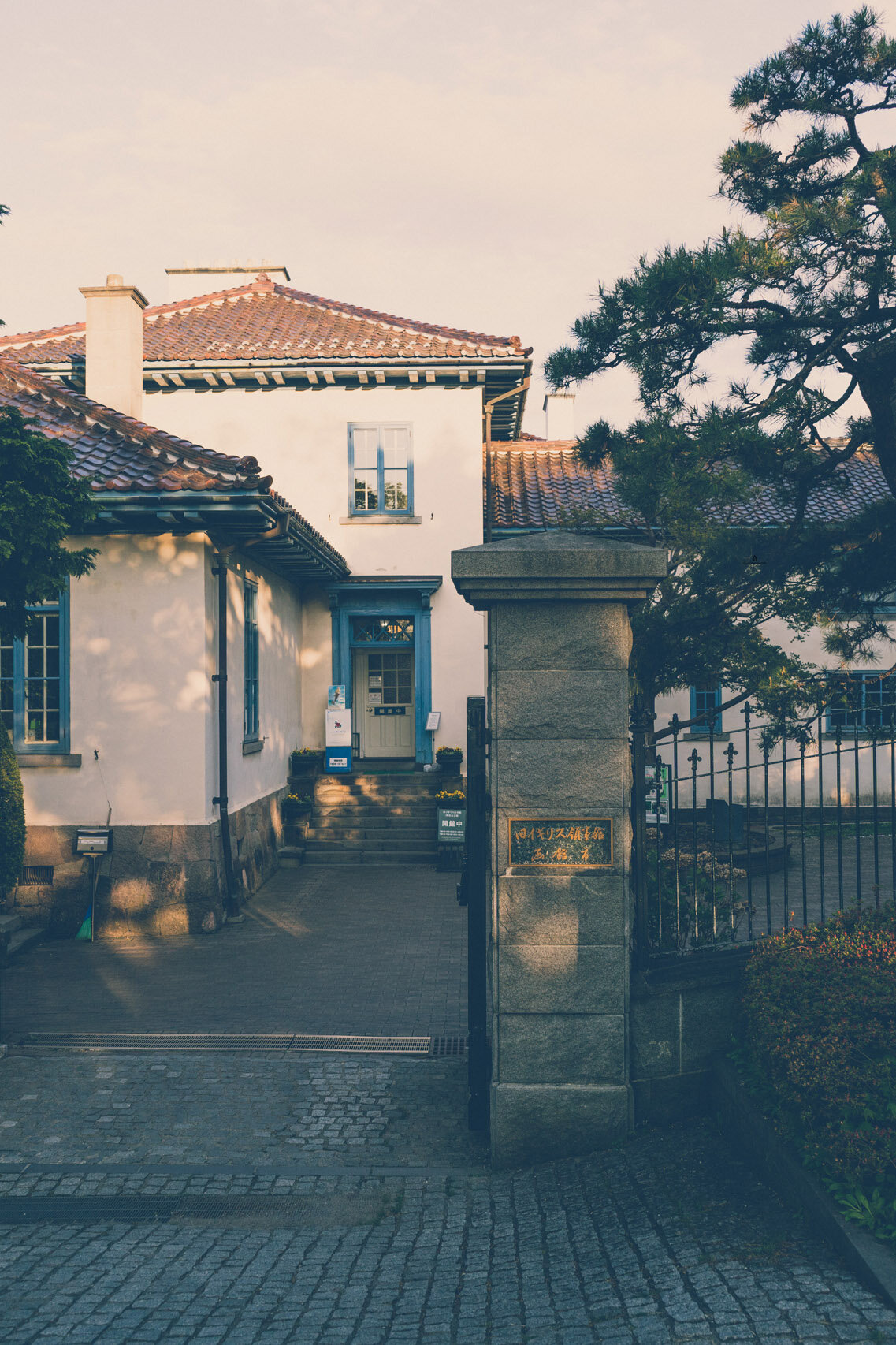
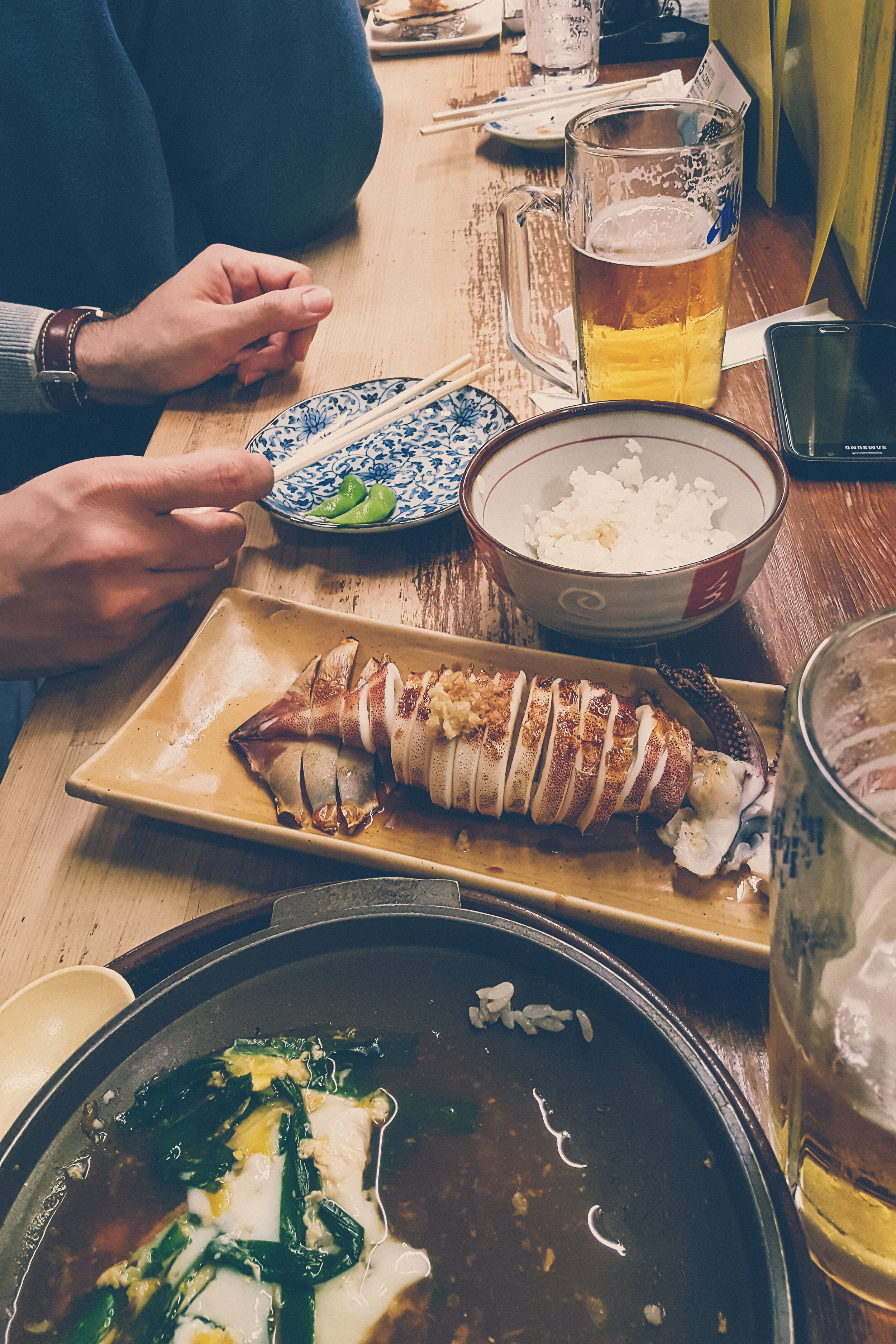
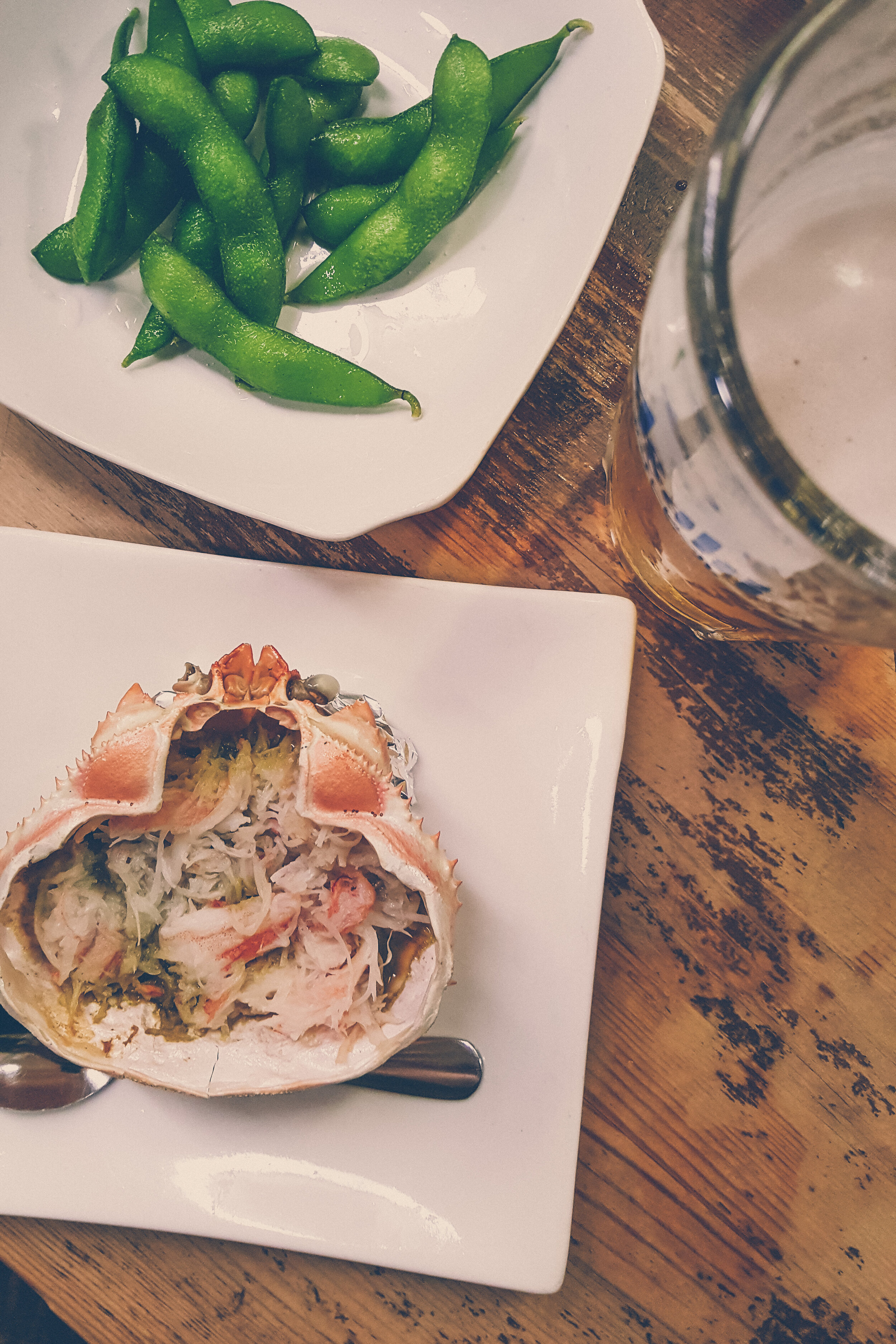

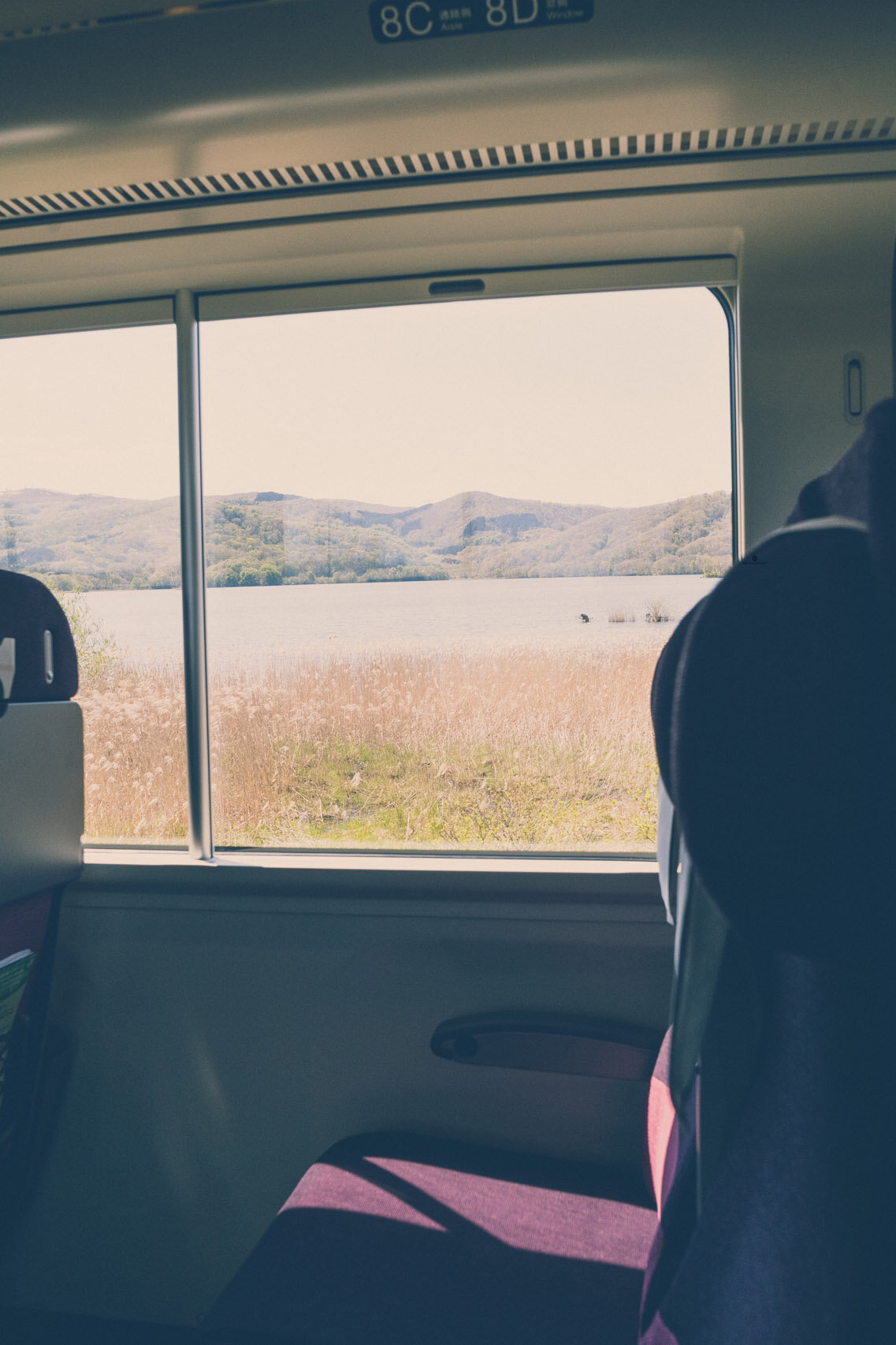
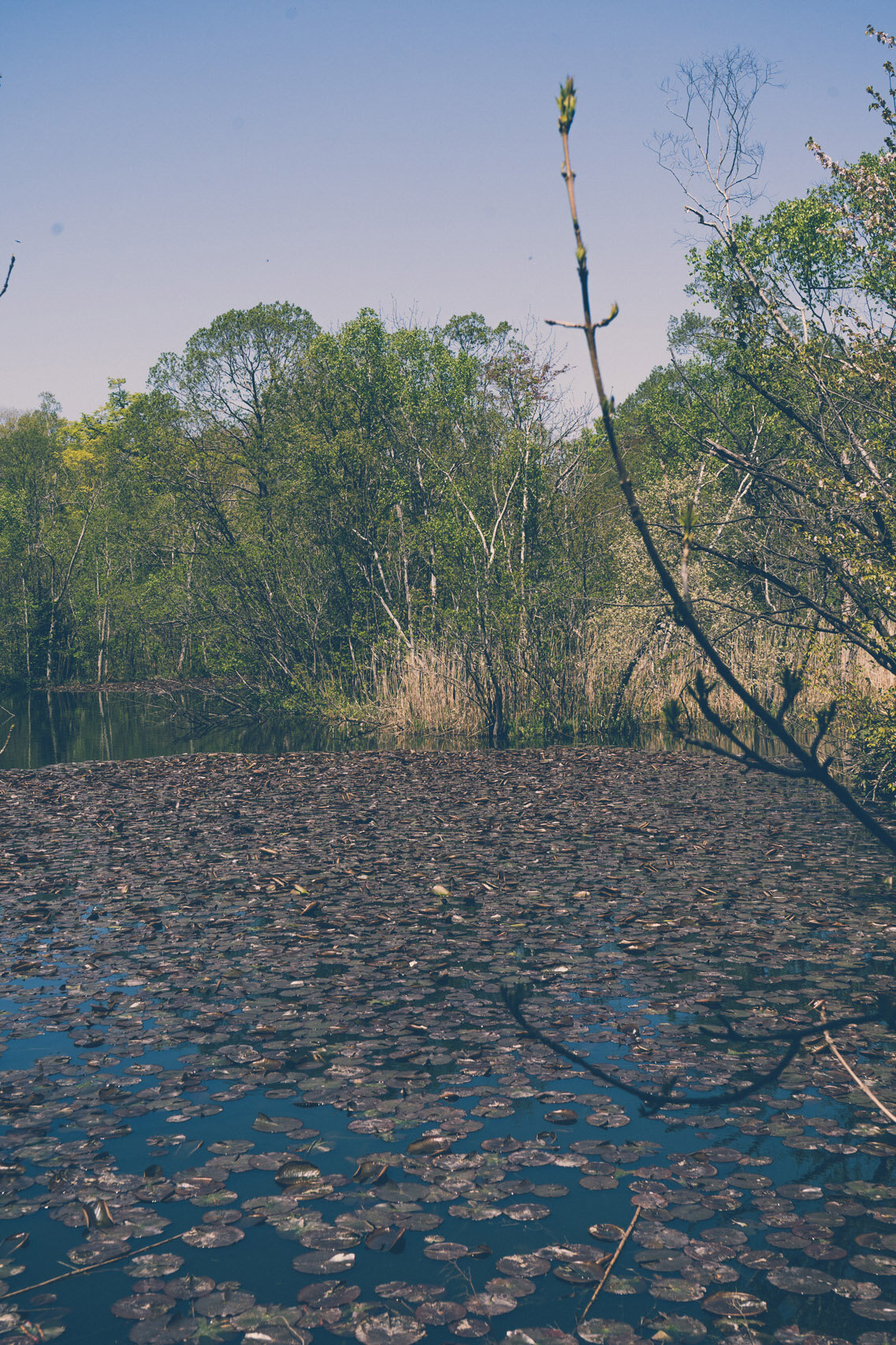


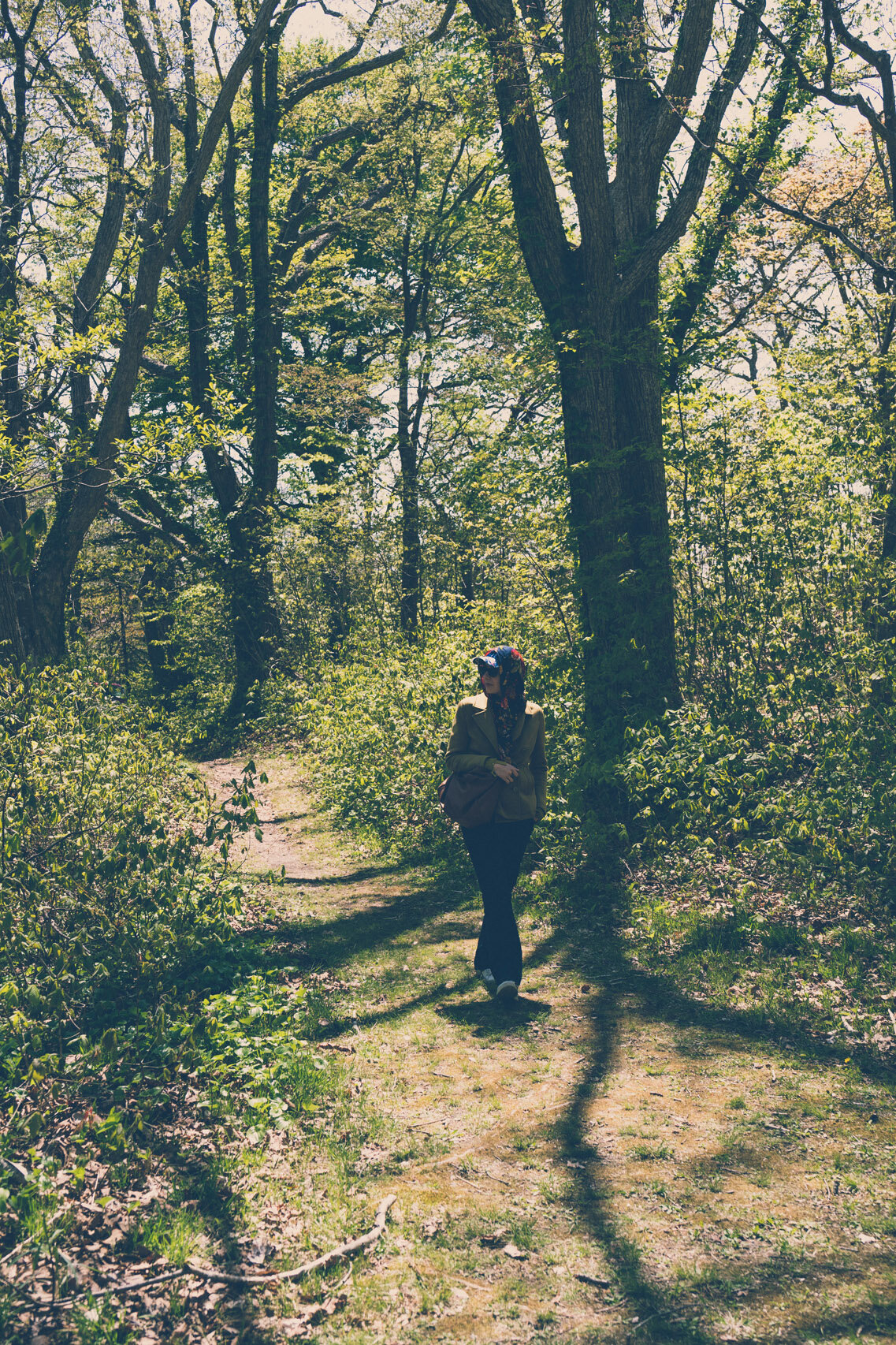
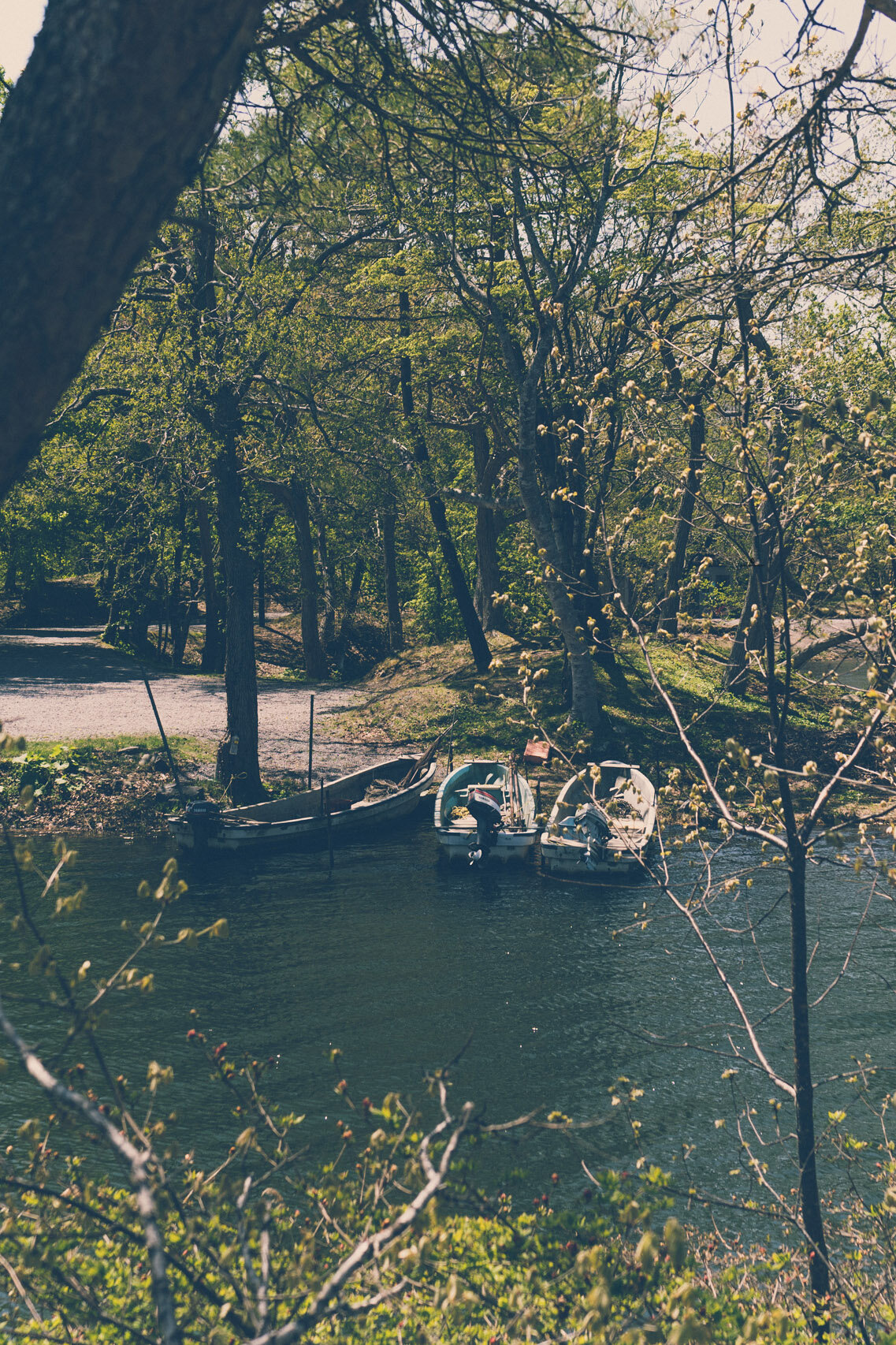

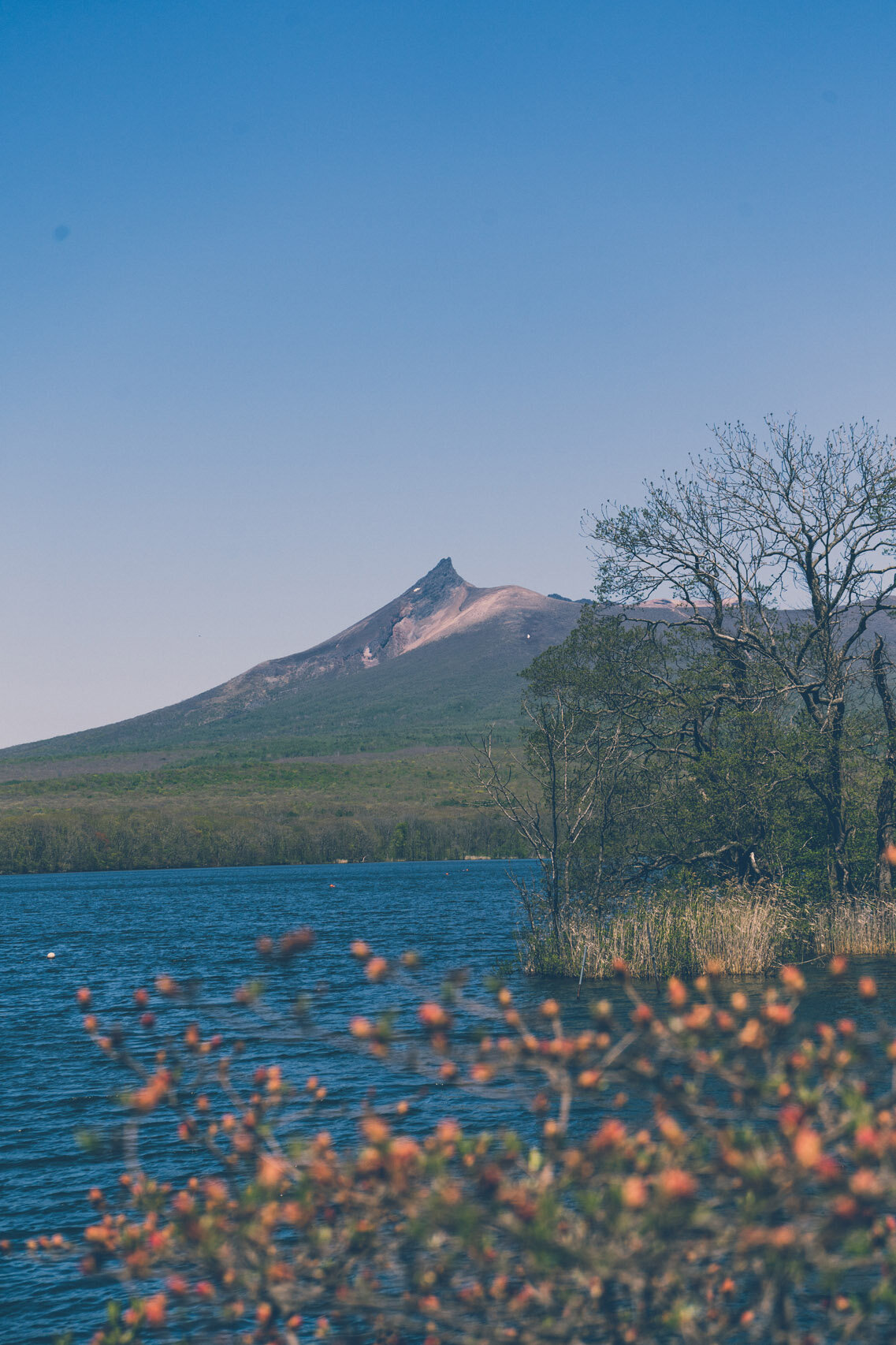
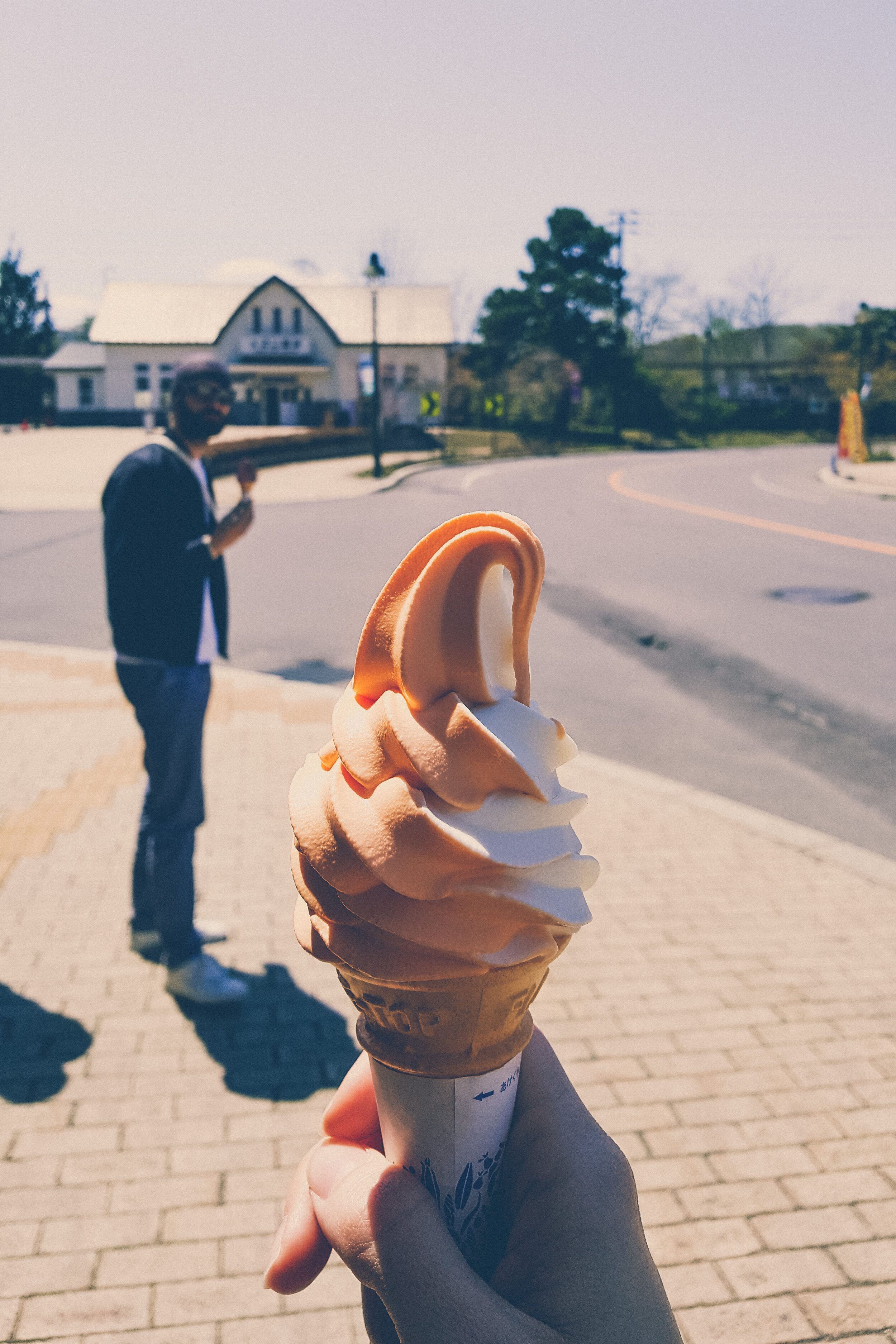


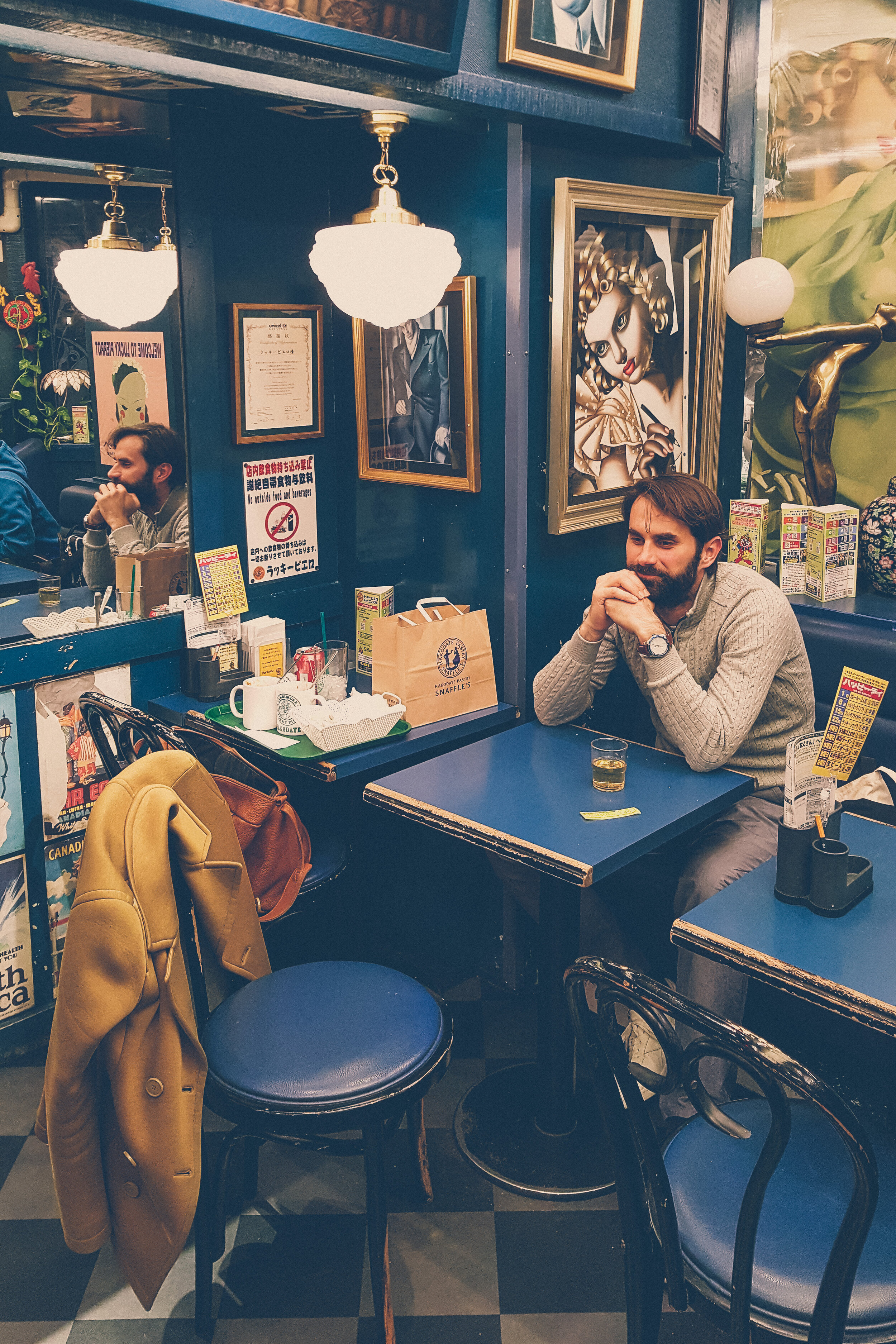



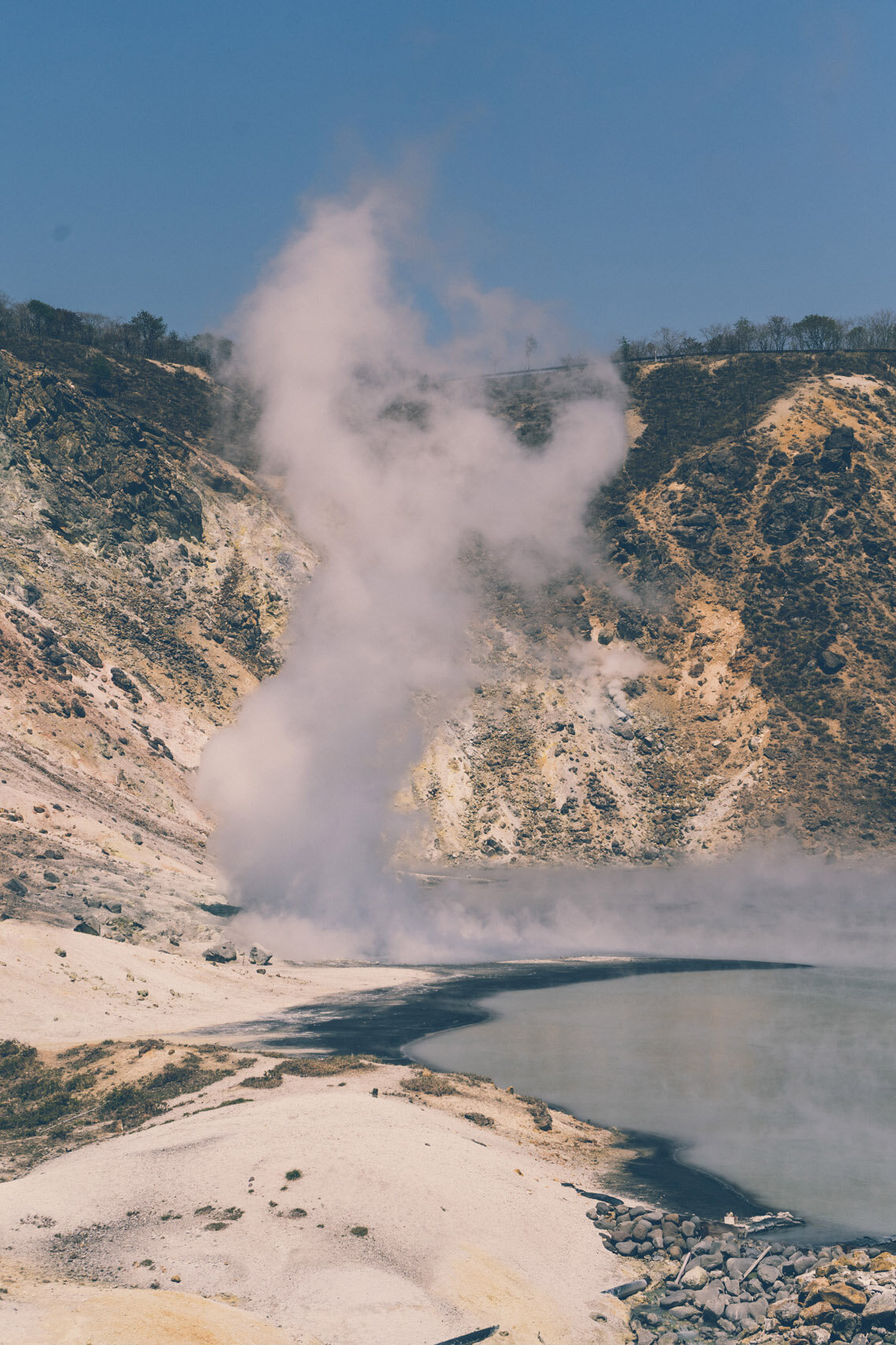




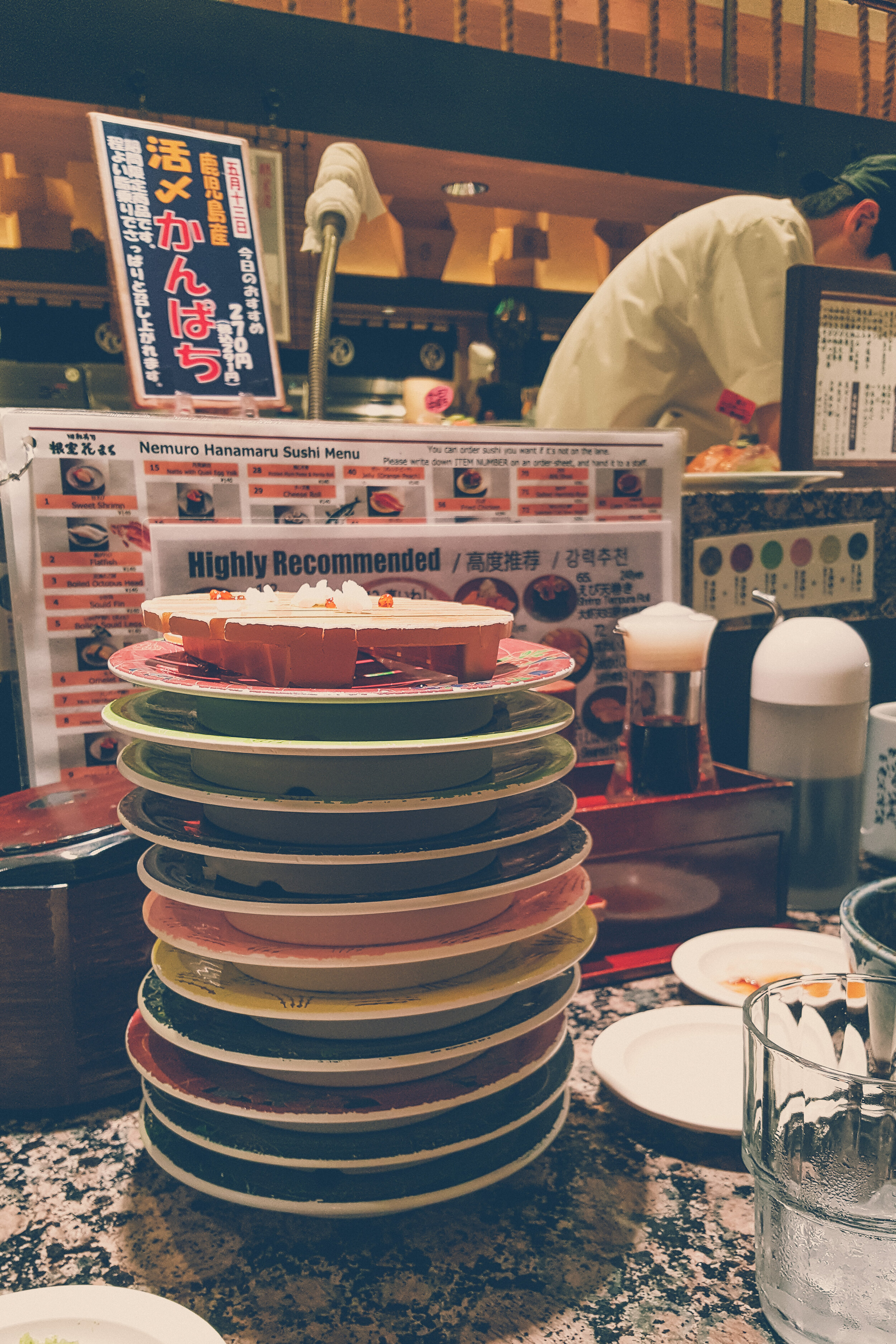


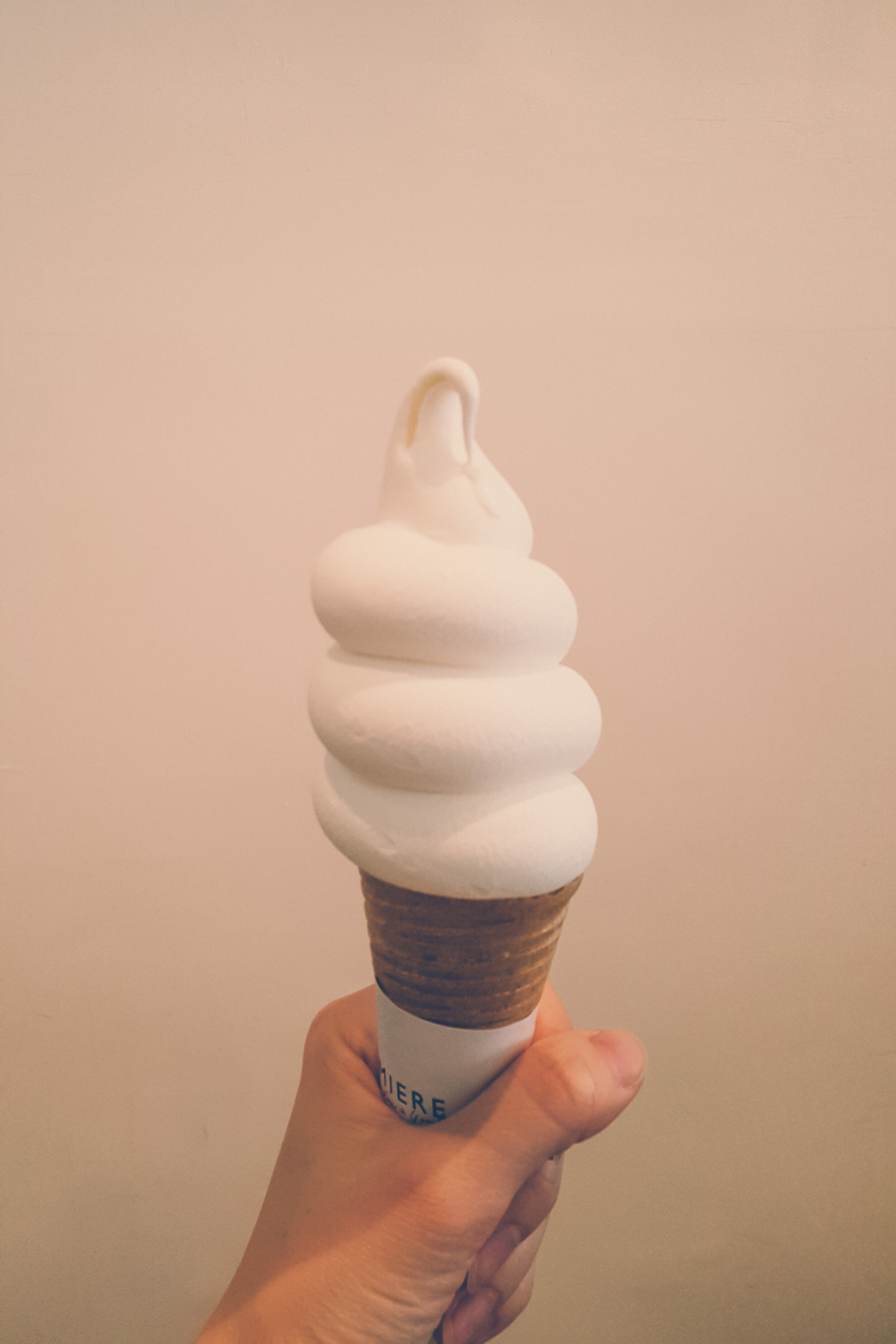
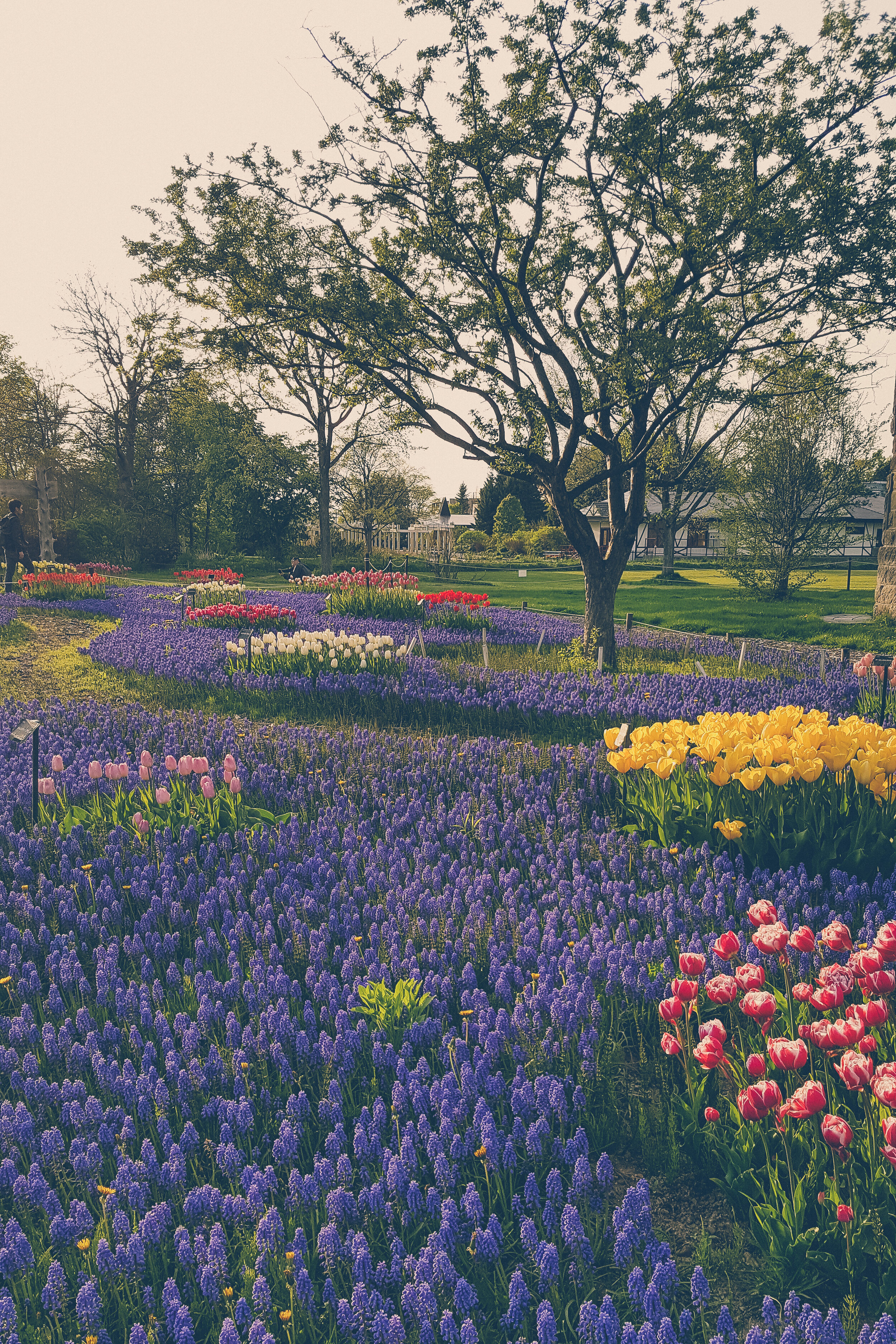

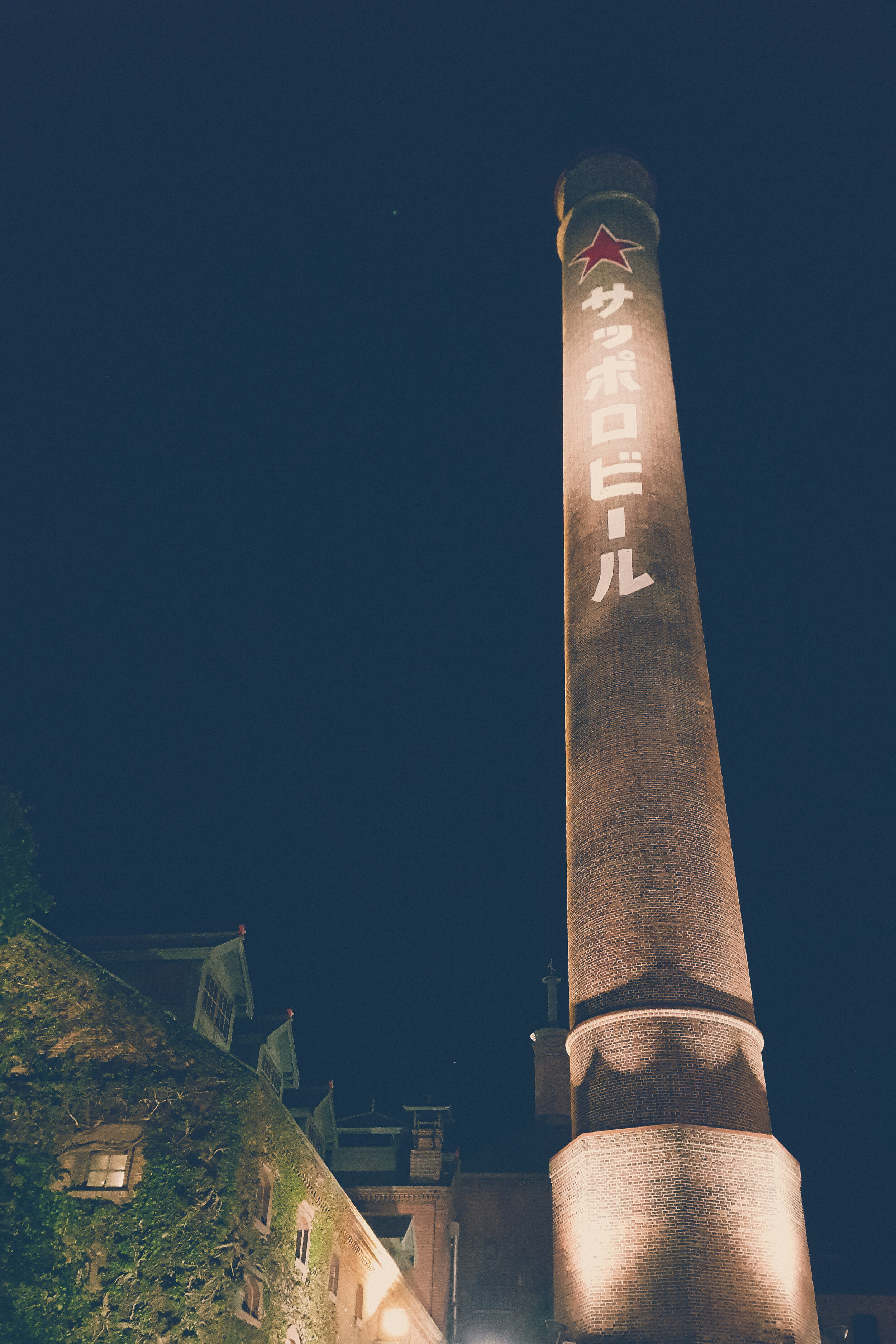
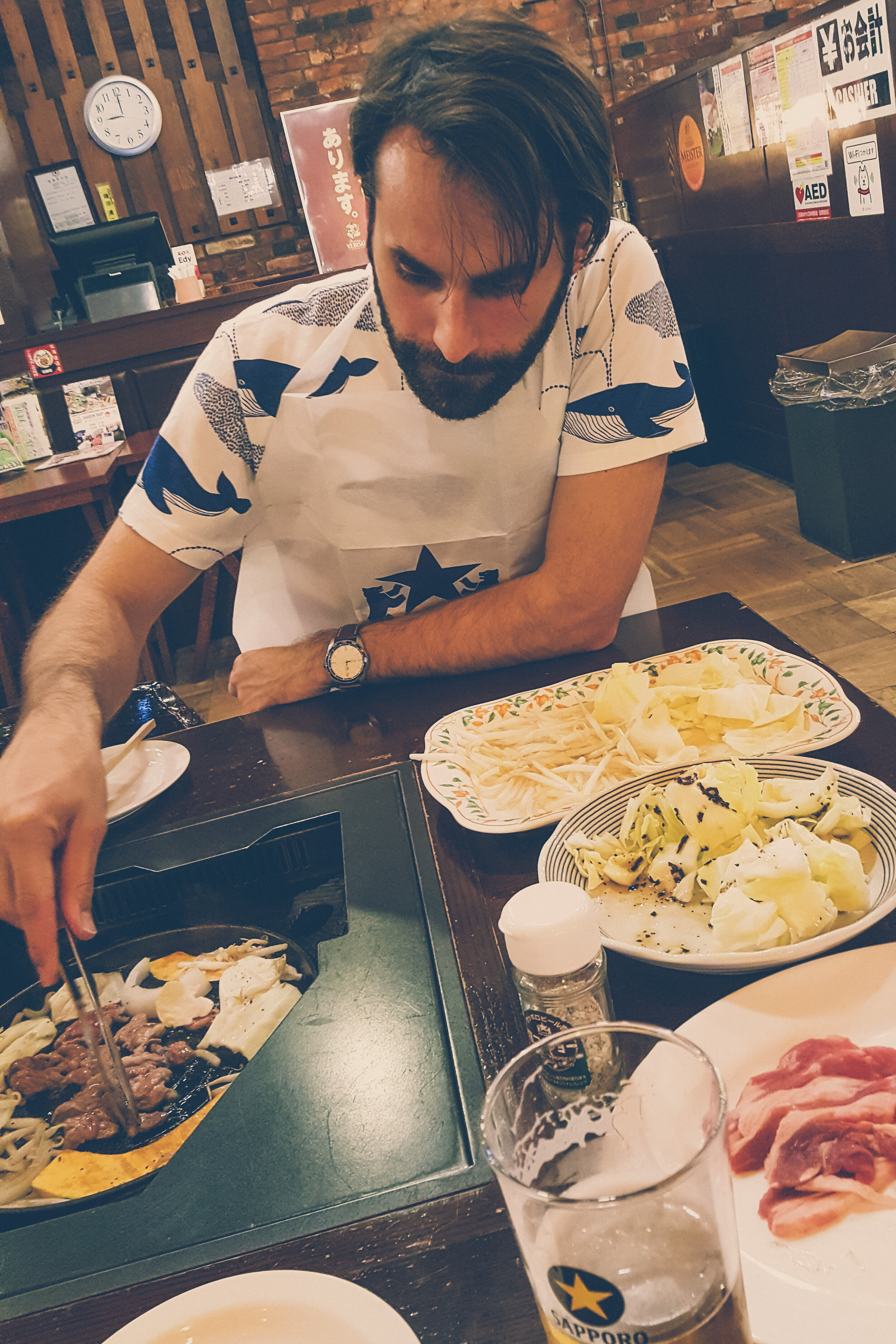

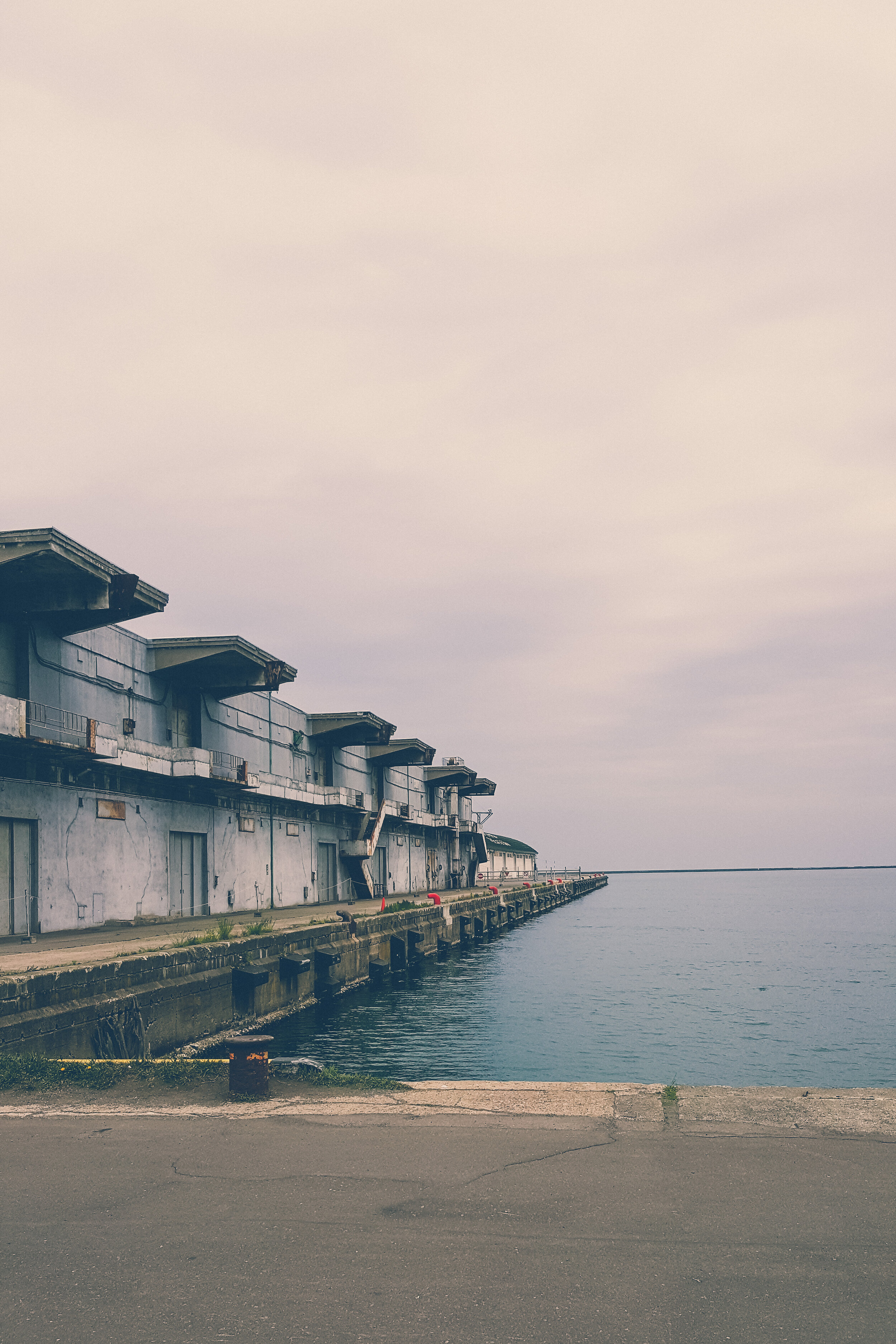

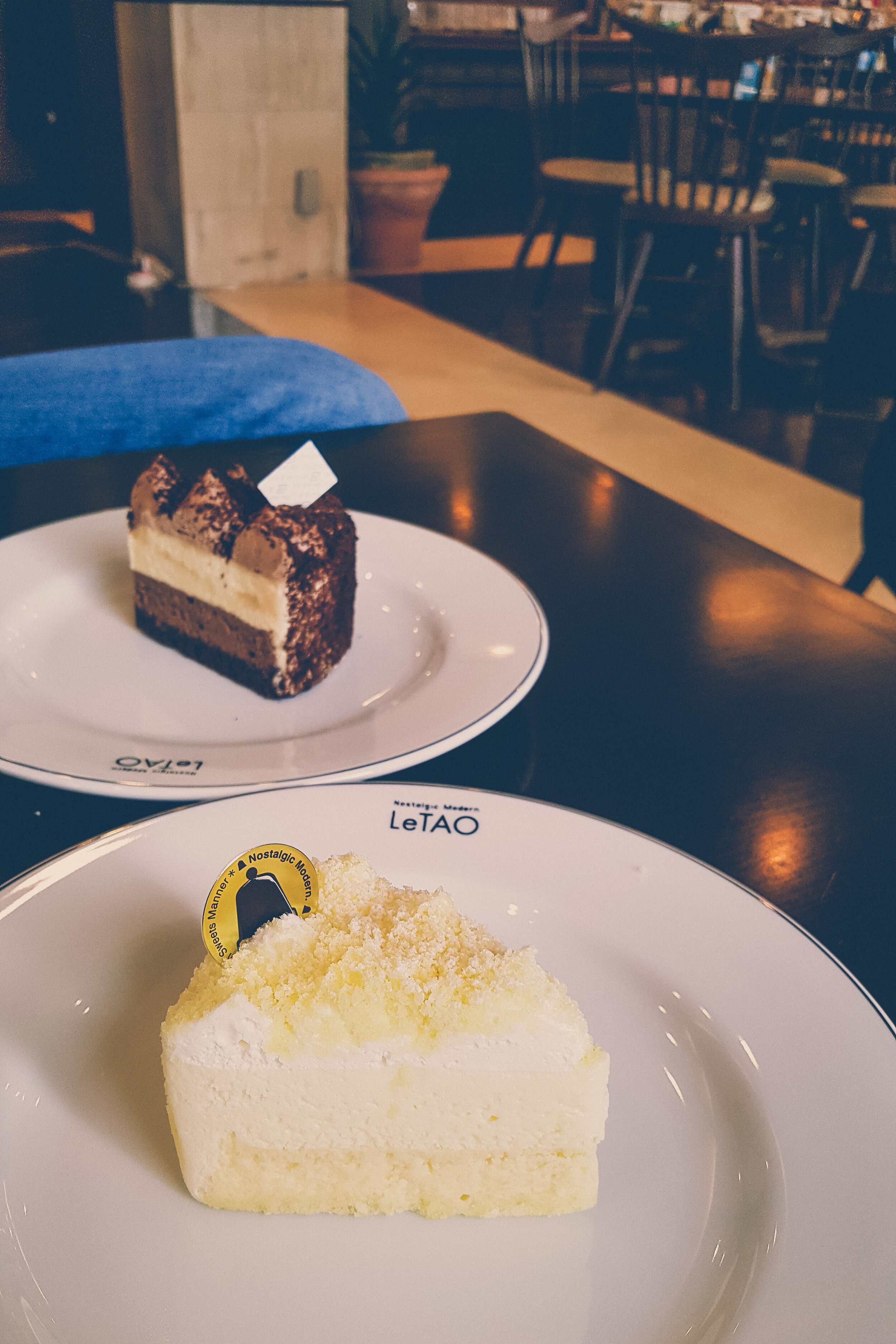


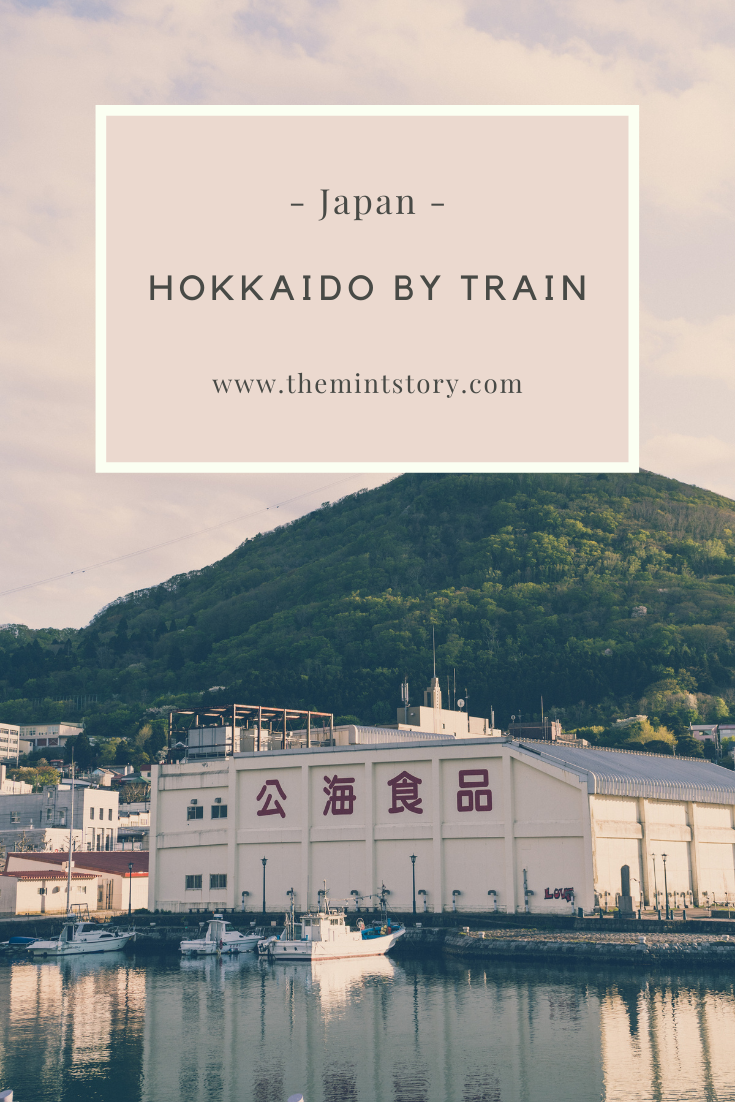



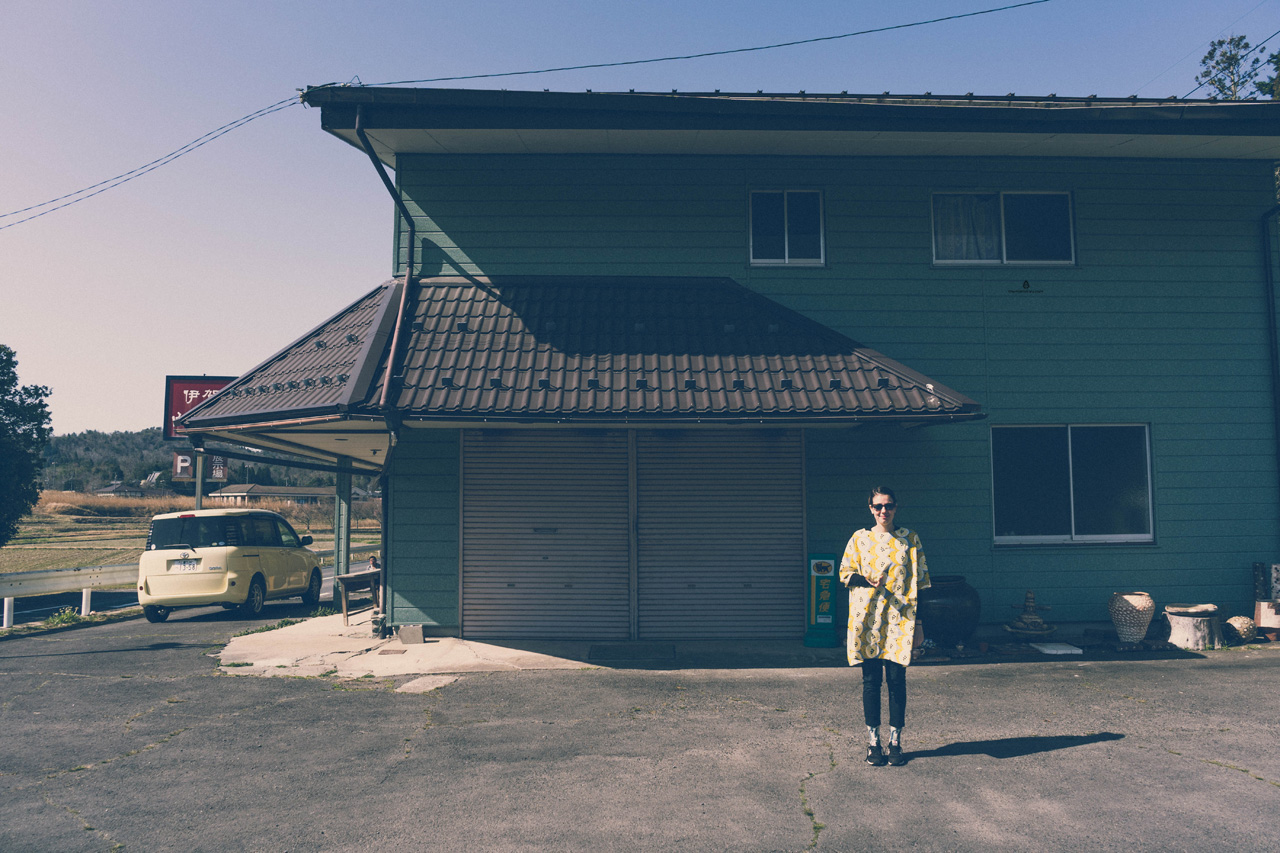
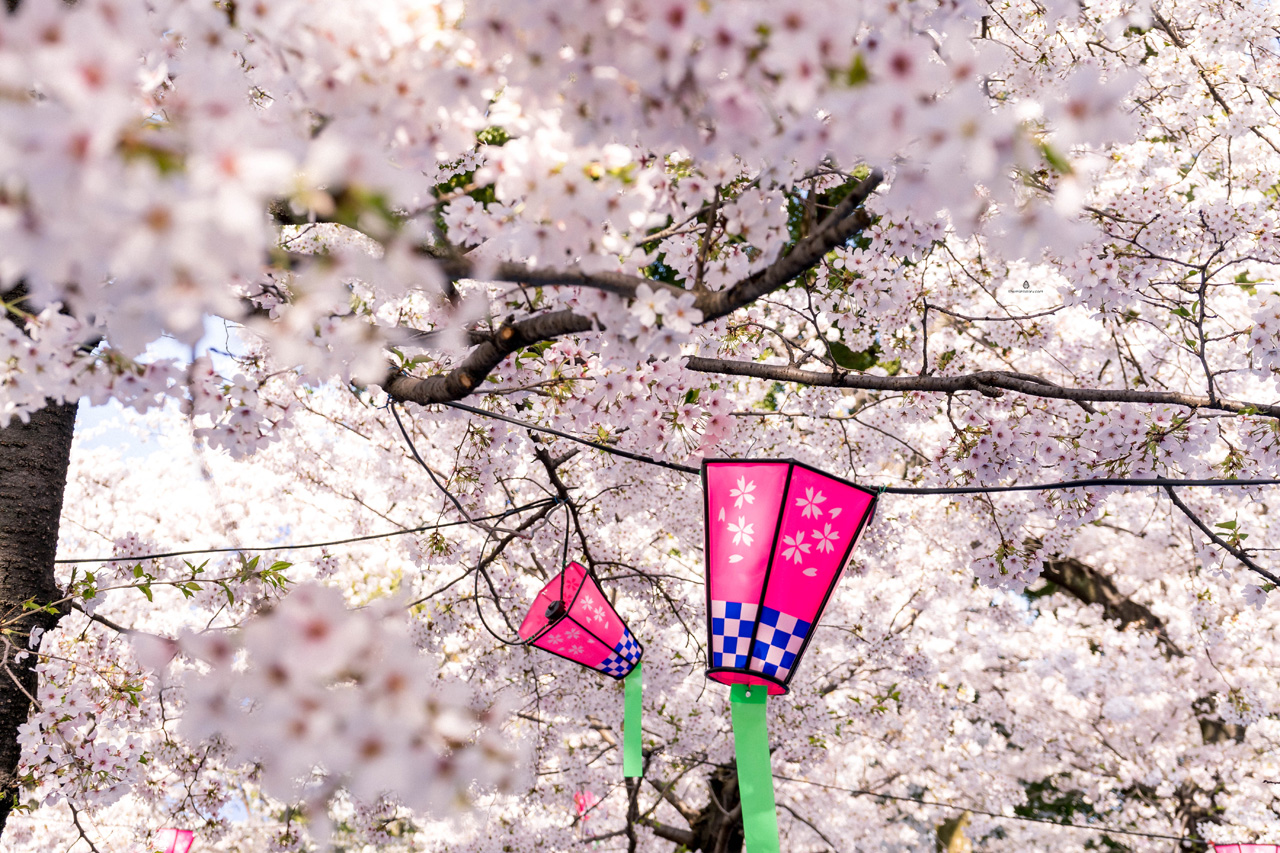




We didn’t fall in love with Hokkaido at first sight, as we did with the rest of Japan. It is the most isolated one of the main Japanese islands, has the weakest traffic connections, isn’t as organized and efficient as the rest of Japan, its trends in tourism are old-fashioned, simply- everything isn’t as you would expect from Japan.